Ankara's main bus terminal, ASTI (acronym for Ankara Sehirlerarasi Terminal Isletmesi - everyone simply calls it Asti), is a mammoth building, with hundreds of buses roaring in and out every hour on routes to all cities and large towns in Turkey. Arrivals and Departures are at different levels making it look like a modern airport. Inside the terminal, large screens display arrival and departure times. It is a sight to view a large batch of buses pull away from adjacent gates simultaneously and then make a dash for the exit followed immediately by the next batch of buses taking up the vacated slots.
We'd already got a taste of Turkey's inter-city bus travel with the innumerable bus companies operating large buses that seemed to be made entirely of glass. The quality of the roadways and these glass behemoths that glide on them make travel in Turkey a dream like experience. Add free WiFi and refreshments served by professionally attired attendants every few hours (on daytime services) and free minibus transfers from the main bus station to the city centers(including hotel drops), you get the complete picture of a modern, efficient transport system that does not make a dent on your pocket. Even the smallest of towns seem to have direct connections to remote corners of the large country. The similarity to air travel is also accentuated by the presence of regional bus companies that operate on the hub-spoke model. As your bus passes through the country from city to city, each bus station is dominated by the local bus company. The occasional problem like a canceled service does occur but this is quickly resolved with prompt transfers.
The free transfer option has a few exceptions, Ankara being one of them. However, ASTI is on the terminus of one of the two underground rail networks that is accessible from within the station building itself, making the servis unnecessary. The Ankaray line is more like a light rail system with frequent stops and slow speed. It connects to the more typical subway system at the busy Khizilay intersection.
As we exited from the street level elevator at Kolej station, we were unsurprisingly hit by a volley of rain water. Those threatening clouds we saw while approaching Ankara were not bluffing. With no retreat option, we had to get out and scamper for the nearest shelter outside a cake shop. We got a taste of Ankaran kindness from the shop owner who insisted that we come in and sit down at a table (no business expected). We consulted our iPhone and figured that we were less than 100m from our hostel and so made a dash for it.
V made the unwelcome discovery that his replacement shoes bought in New Delhi (but made in the same country as the original shoes that broke down in China) exhibited the same problem under rainy conditions. To their credit, the shoes don't let any water in when there are no rain water puddles on the streets. We should not really be complaining.
The cold rainy weather was here to stay for the next several days but we refused to let it lock us indoors. The award winning Museum of Anatolian Civilizations and Roman era structures in the Ulus area needed to be visited and we did end up walking in the rain exploring the area.
The museum covered the Paleolithic (to 8000 BC), Neolithic (8000-5500 BC), Chalcolithic (5500-3000 BC), Early Bronze Age (3000-1950 BC), Assyrian Trade Colonies (1950-1750 BC), Hittites (1750-1200 BC), Phrygians, Urartians, Lydians (1200-600 BC) and Neo Hittites eras. The exhibits were mostly from nearby regions with some coming from other parts of Turkey.
Some highlights:
- bas relief work from the Neo Hittite era (a lion figure had its head projected into the air while the rest of its body was a bas relief)
- correspondence between Egyptian queen Nefertari and Hittite queen Puduhepa written after the first peace treaty in world history
- Çorum-Bogazköy bronze tablet (1235 BC)
The nearby Haci Bayram Camii mosque is dedicated to the founder of the Bayrami Sufi sect in the 15th century. Adjacent to the mosque is the site of the Temple of Augustus and Rome, which was built between 25 and 20 BC after the conquest of Central Anatolia by the Roman Empire. One has to look for it carefully as it could easily be mistaken for a massive construction site. Nearby structures were being demolished and it looked chaotic in the rain. On our way back to the Ulus Metro station we paused by the Column of Julian which was erected in honor of the Roman Emperor Julian the Apostate's visit to Ancyra in 362.
V made an earnest attempt to purchase new shoes to replace his faulty pair but did not succeed in finding anything suitable. A temporary solution was found in the plastic shoe covers that are available in plenty in Turkey as you enter mosques, hotels and museums. They could be worn as a waterproof lining over the socks and worked well to keep the moisture out.
After our first few days in Turkey, we managed to identify a few vegetarian favorites in Turkish cuisine. Gözleme (hand rolled pastry with choice of filling - potatoes, cheese or spinach) and Ayran (cool salted buttermilk) is a powerful combination. Rather than ask whether the place has any vegetarian items on their menu, we now have a few names to throw around. Things are looking up.
Google Maps Link
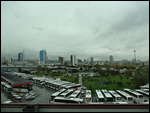
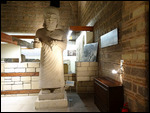
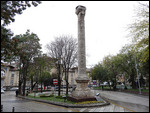
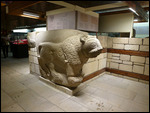
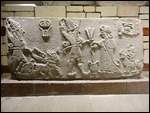
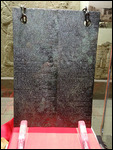
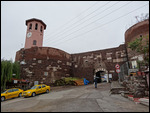
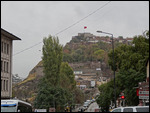
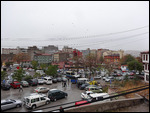
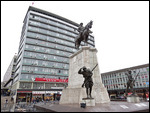
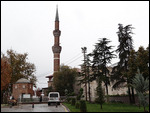
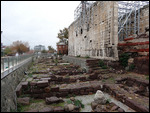
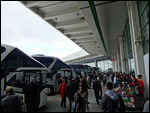
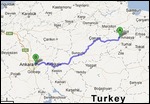
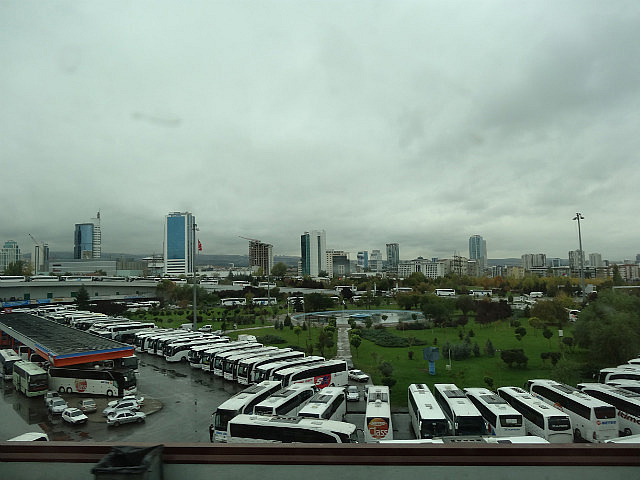
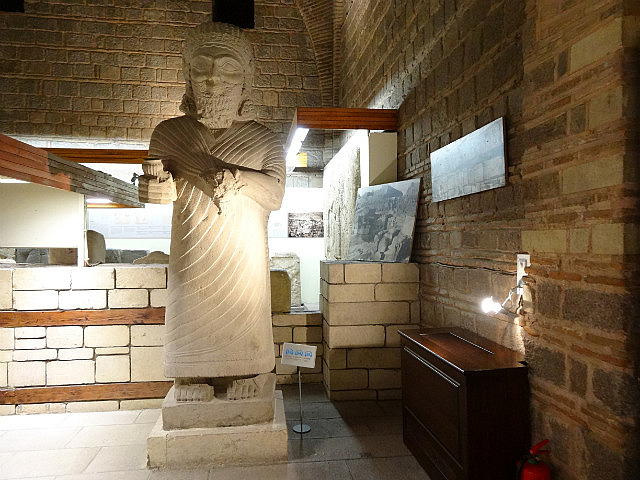
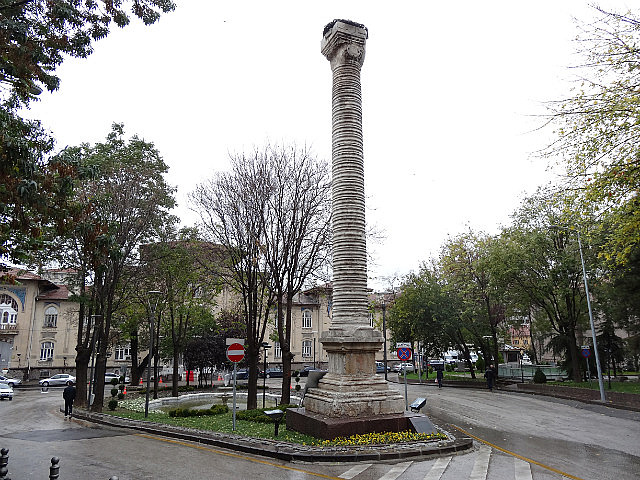
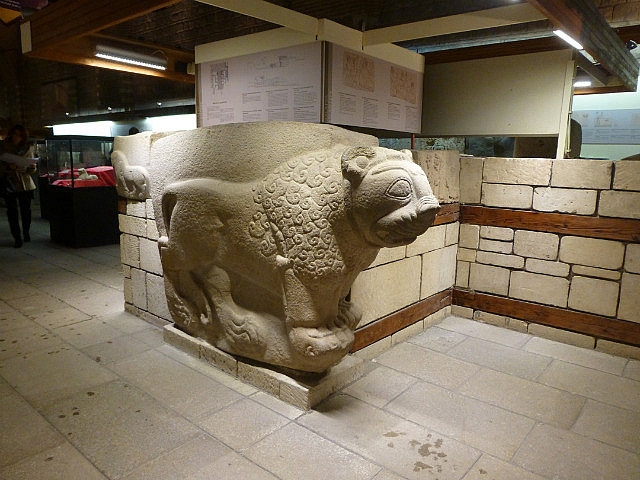
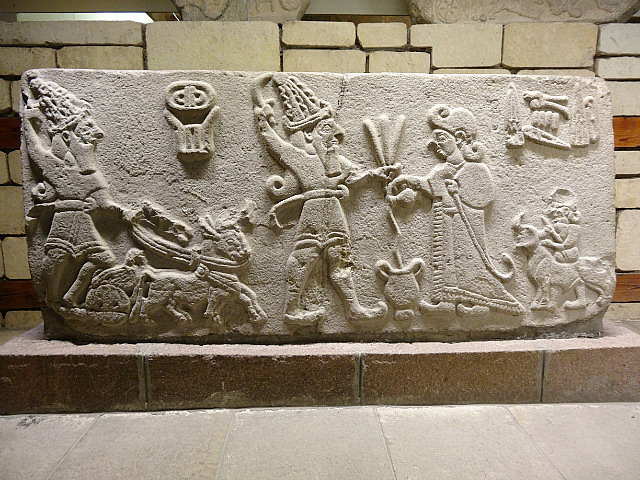
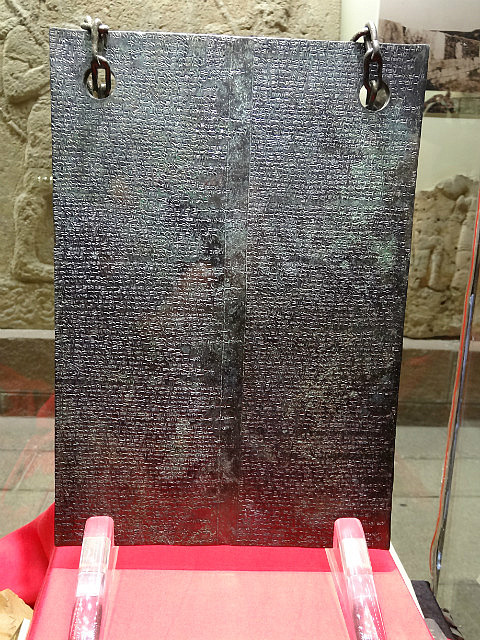
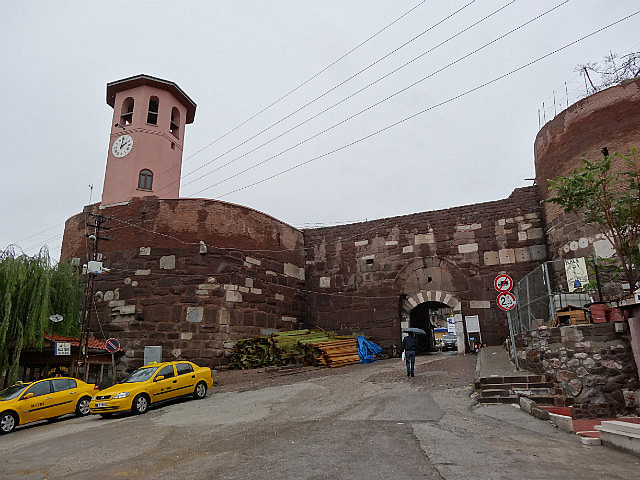
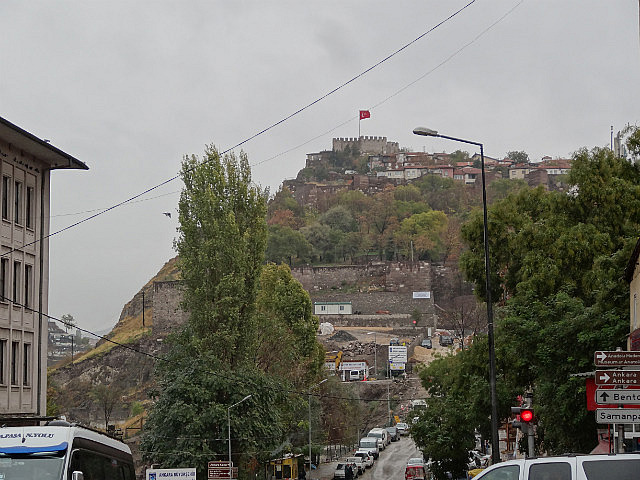
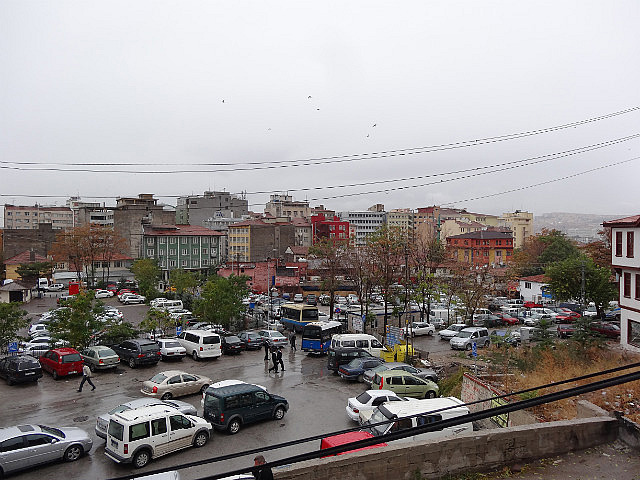
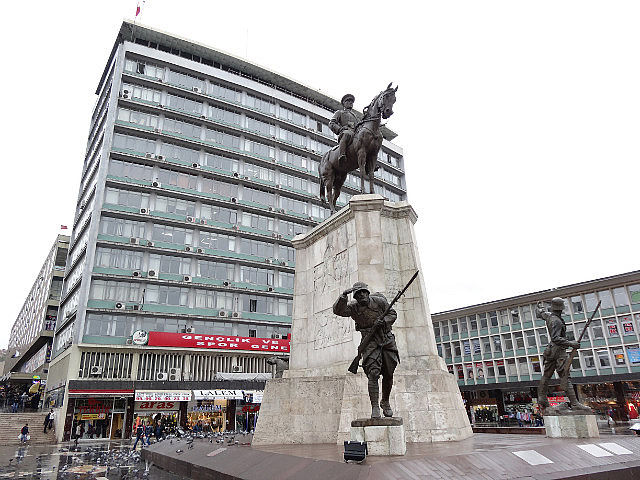
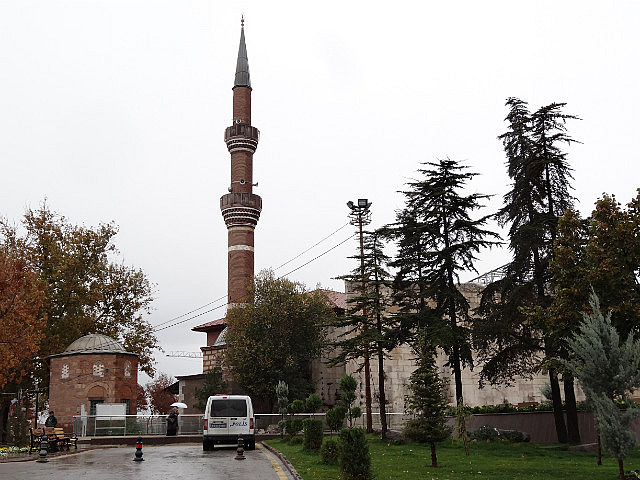
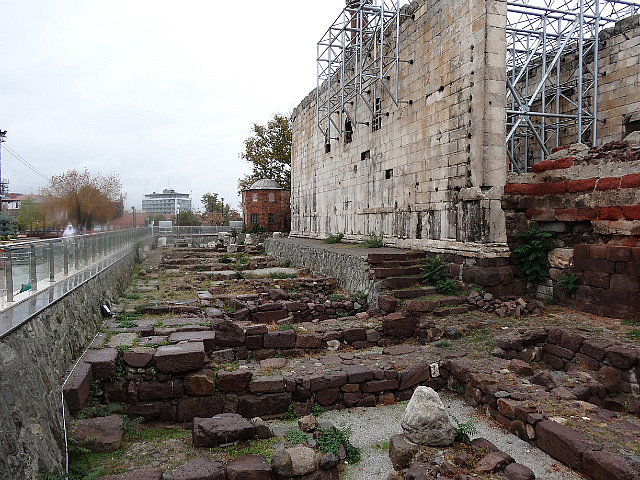
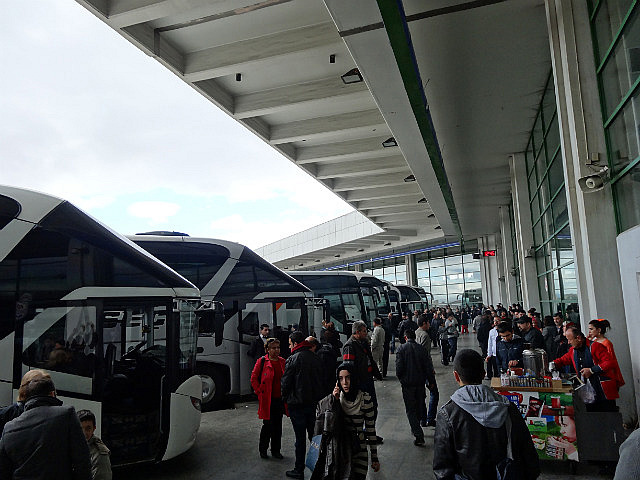
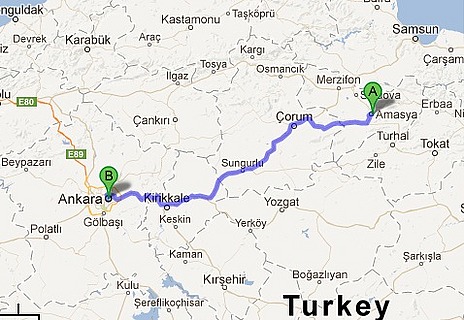
Comments